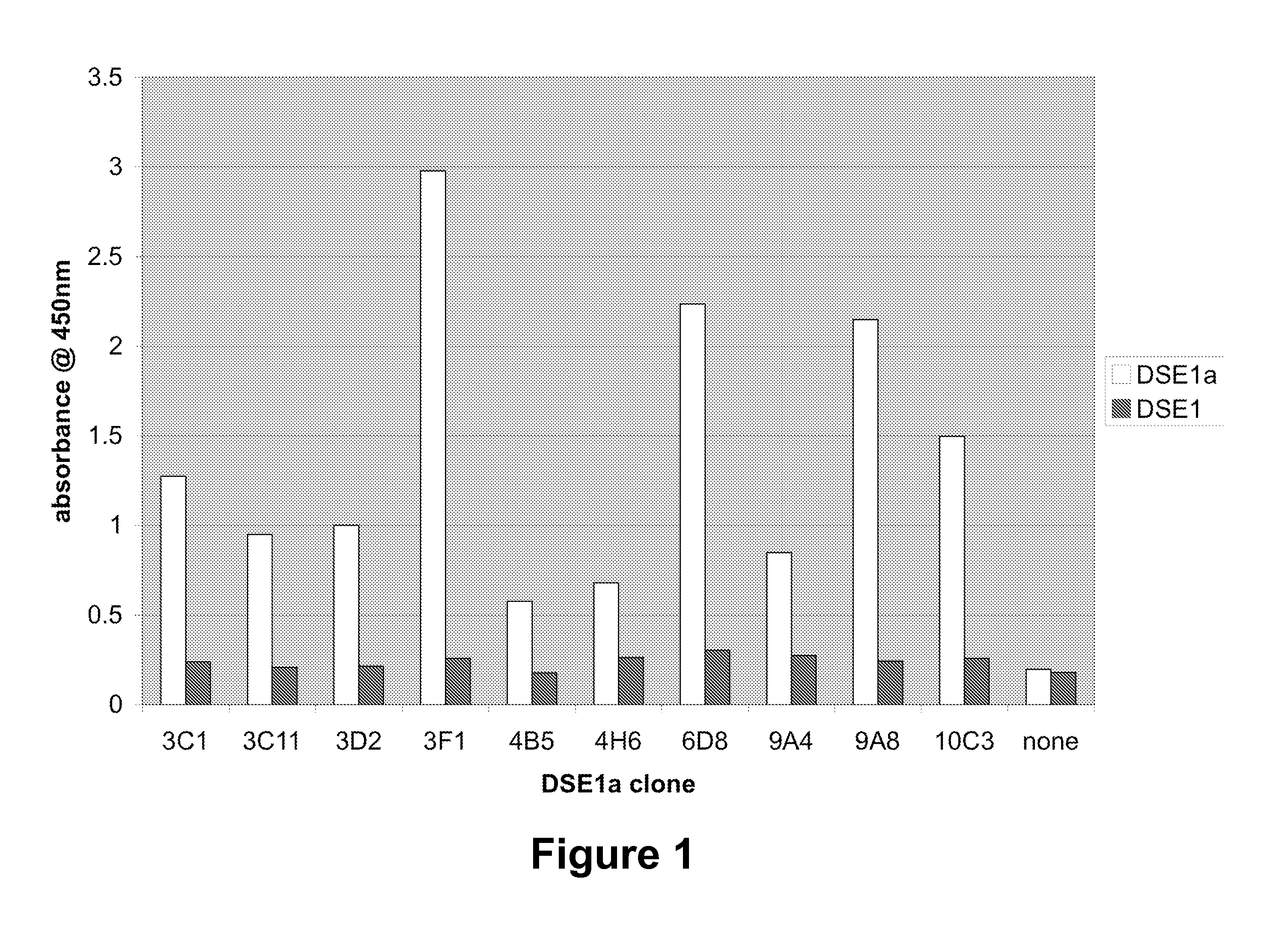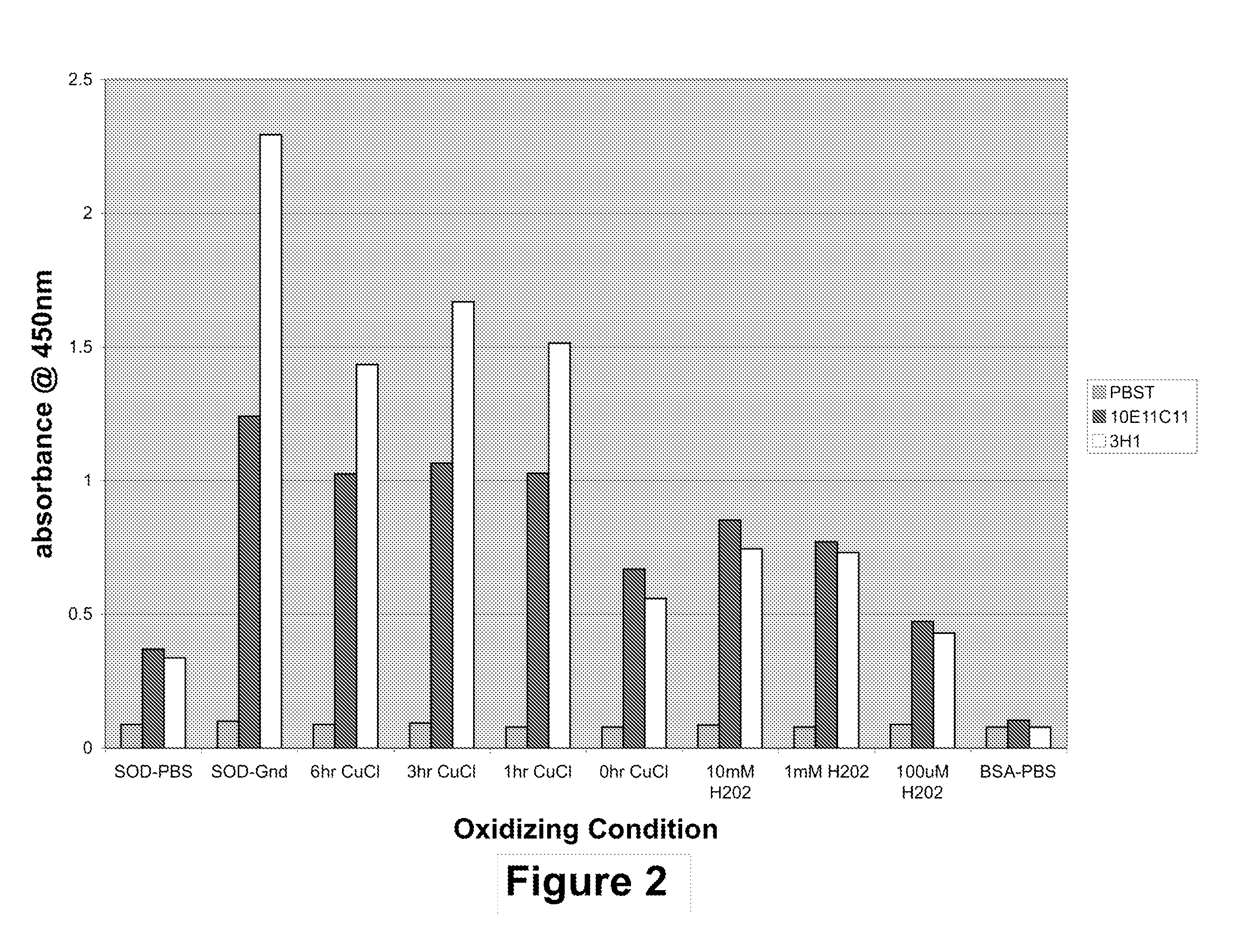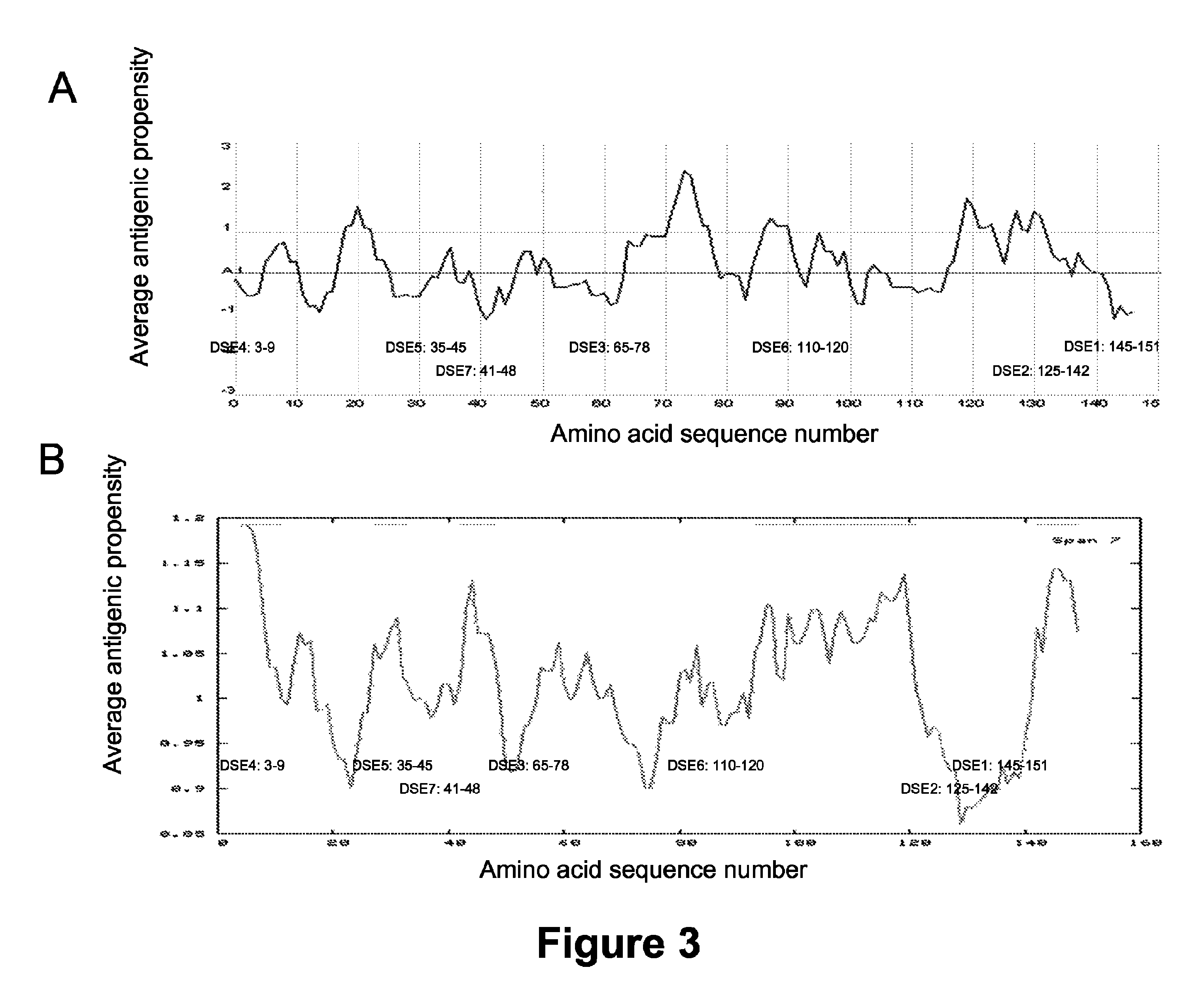Methods and compositions to treat and detect misfolded-SOD1 mediated diseases
a technology of misfolded sod1 and composition, which is applied in the direction of active genetic ingredients, peptide/protein ingredients, dna/rna vaccination, etc., can solve the problems of deleterious autoimmune effects, challenges to our aging population and health care system, etc., to inhibit or neutralize the toxic effect, inhibit the aggregation of sod1, and prevent the effect of disease progression
- Summary
- Abstract
- Description
- Claims
- Application Information
AI Technical Summary
Benefits of technology
Problems solved by technology
Method used
Image
Examples
example 1
DSE2 Monoclonal Antibody Generation
[0371]An isolated peptide corresponding to amyotrophic lateral sclerosis-specific epitope (DLGKGGNEESTKTGNAGS) (SEQ ID NO: 2) bearing an N-terminal Cys residue was conjugated to KLH for immunization of BALB / c mice, and to BSA for ELISA screening. Multiple injections were given to each mouse at 21-day intervals. The adjuvant for first injection was Complete Freund's Adjuvant (Sigma, Cat# F5881-6×10 mL). Incomplete Freund's Adjuvant (Sigma, Cat# F5506-6×10 mL) was the adjuvant used for the remaining injections. Blood was collected from the mice 7-10 days after the 3rd injection. The cell fusion was done 3-4 days after the final boost without any adjuvant.
[0372]The fusion partner used was Sp 2 / 0-Ag14 (ATCC# CRL-1581). The fusion between fusion partner SP2 / 0 and spleen cells was done at 1:5 ratio (2.0×107:1.0×108) in 1 ml pre-warmed PEG (MW1450: Sigma, Cat# P7181). Fusion cells were re-suspended into 50 ml of DMEM with 10% FBS and plated into 5 96-well...
example 2
Large Scale Monoclonal Antibody Production
[0373]For large scale antibody production, 0.2-0.5 ml of Pristane (Sigma, Cat#T-7640) or IFA was injected to each mouse (BALB / c) by i.p. for priming. On day 7-14, 500,000 to 5,000,000 hybridoma cells in 0.5 ml 1×PBS at log phase were injected to each mouse by i.p. The ascitic fluid was allowed to accumulate for 1-2 weeks. 2-5 ml of ascites can be harvested from each mouse, with an IgG concentration around 1-9 mg / ml. Protein A was used for the IgG2 and 3 purification, and Protein G for IgG1.
[0374]The IgG mAb clone was designated 10E11C11. This antibody displays properties consistent with its recognition of a disease-specific epitope for misfolded SOD1. This mAb binds to denatured SOD1 on immunoblot membranes, recognizing monomeric denatured SOD1 (unstructured). The mAb does not recognize the dimeric SOD1 on immunoblotting. On immunoprecipitations mediated by 10E11C11 conjugated magnetic beads, there is no detectable binding of native SOD1 fro...
example 3
DSE2 Monoclonal Antibody Generation Method 2
[0377]Mouse monoclonal antibody generation: 4 female BALB / c mice were initially immunized by intraperitoneal injections with 25 mg of KLH coupled to peptide corresponding to DSE2 (DLGKGGNEESTKTGNAGS) (SEQ ID NO: 2), plus an N terminal cysteine for coupling to KLH by disulfide bridge formation) per mouse in Complete Freund's Adjuvant. Four subsequent boosts were administered as above, spaced at 3 week intervals, with Incomplete Freund's Adjuvant. When the serum titre had risen more than 10-fold from a pre-immune serum sample, as determined by ELISA, the 2 highest mouse responders were each boosted intravenously with 10 mg of KLH coupled peptide protein antigen, in 100 ml of sterile PBS pH 7.4. Three days later the donor mice were sacrificed and the spleen cells were harvested and pooled. Fusion of the splenocytes with SP2 / 0 BALB / c parental myeloma cells was performed as previously described (see example 1 above) except that one-step selecti...
PUM
| Property | Measurement | Unit |
|---|---|---|
| concentration | aaaaa | aaaaa |
| concentration | aaaaa | aaaaa |
| concentration | aaaaa | aaaaa |
Abstract
Description
Claims
Application Information
 Login to View More
Login to View More - R&D
- Intellectual Property
- Life Sciences
- Materials
- Tech Scout
- Unparalleled Data Quality
- Higher Quality Content
- 60% Fewer Hallucinations
Browse by: Latest US Patents, China's latest patents, Technical Efficacy Thesaurus, Application Domain, Technology Topic, Popular Technical Reports.
© 2025 PatSnap. All rights reserved.Legal|Privacy policy|Modern Slavery Act Transparency Statement|Sitemap|About US| Contact US: help@patsnap.com



